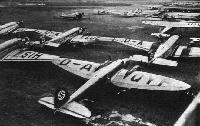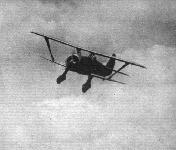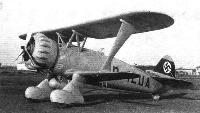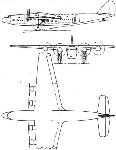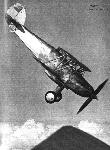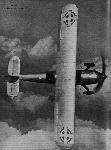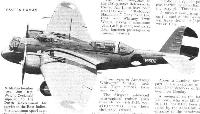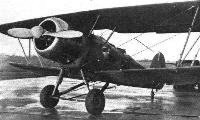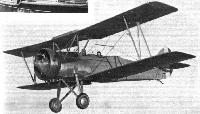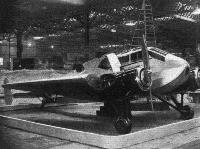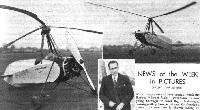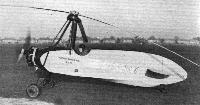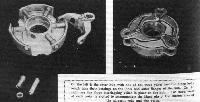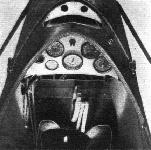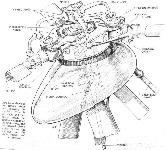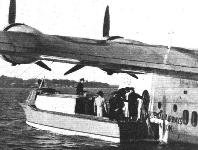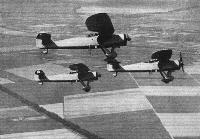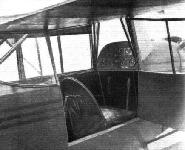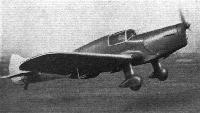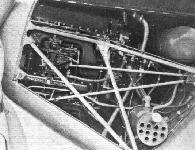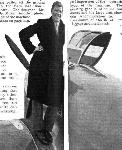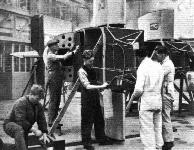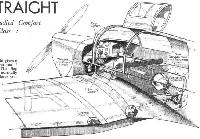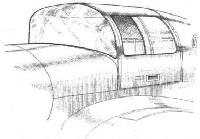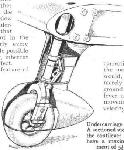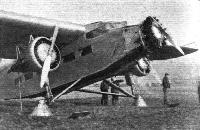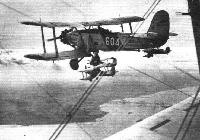Фотографии
-
Регистрационный номер: D-AFYS, D-ALUE, D-AQYF, D-ASIH, OY-DIG International convention at Tempelhof - Heinkel He.111, Junkers Ju.52, Danish Fokker, French Wibault, and others.
Самолёты на фотографии: Fokker F.IX / F.XII / F.XVIII - Нидерланды - 1929Heinkel He-111 - Германия - 1935Junkers Ju.52/3m - Германия - 1931Wibault Wibault 280 - Франция - 1930
-
A Deutsch Luft Hansa Ju.52 and Heinkel 111 at Tempelhof.
Самолёты на фотографии: Heinkel He-111 - Германия - 1935Junkers Ju.52/3m - Германия - 1931
-
Регистрационный номер: R258Y, NX258Y HOT FROM HOLLYWOOD: The modified Hughes Special (Pratt and Whitney Twin Wasp Junior) in which Mr. Howard Hughes flew from Los Angeles to Newark, New Jersey, at an average speed of 332 m.p.h.
Самолёты на фотографии: Hughes H-1 - США - 1935
-
This single-seater dive bomber, the Henschel 123, is now in production for the German Air Force with a B.M.W. Hornet nine-cylinder air-cooled radial. It has a top speed of 220 m.p.h.
Самолёты на фотографии: Henschel Hs 123 - Германия - 1935
-
Регистрационный номер: D-ILUA The Henschel single-seater fighter and dive bomber. Between the undercarriage legs is an auxiliary fuel tank.
Самолёты на фотографии: Henschel Hs 123 - Германия - 1935
-
Регистрационный номер: F1417 REALISM in flying scale models: Three prize-winners in the senior section of the constructional competition recently held by Hamlays, of Regent Street, London. Trophies were presented by Major C. J . Galpin, D.S.O., Deputy Director of Civil Aviation. The Bristol Fighter (third prize) by Mr. H. J. Pomeroy.
Самолёты на фотографии: Bristol F.2A/F.2B Fighter - Великобритания - 1916
-
These general arrangement drawings of the Ensign class monoplanes being built for Imperial Airways by Armstrong Whitworths bring out some striking design features. The span is 123 ft., length 110 ft., and wing area 2,450 sq. ft.
Самолёты на фотографии: Armstrong Whitworth Ensign / A.W.27 - Великобритания - 1938
-
FOR YUGO-SLAVIA: Despite the enormous amount of work created by the expansion of our own Air Force the industry is still able to cope with orders from abroad. This aerial photograph shows one of a batch of the latest Hawker Furies for Yugo-Slavia. Fitted with a Rolls-Royce Kestrel XVI and Dowty cantilever undercarriage it has a speed of 250 m.p.h.
Самолёты на фотографии: Hawker Fury - Великобритания - 1931
-
The chief interest of this remarkable aerial photograph is its testimony to the skill of the Hawker test pilots who enabled Flight's chief photographer to secure them. On the photo, the two machines dived in intimate company at 280 m.p.h.
Самолёты на фотографии: Hawker Fury - Великобритания - 1931
-
The chief interest of this remarkable aerial photograph is its testimony to the skill of the Hawker test pilots who enabled Flight's chief photographer to secure them. On the photo, Mr. J. S. Hindmarsh had one of the Yugo-Slavia Hawker Furies (Kestrel XVI) in a vertical turn, while Flt. Lt. P. W. S. Bulman, flying the photographer in the Hart "-MR," broke away sharply to clear as the other side-slipped at the crucial instant.
Самолёты на фотографии: Hawker Fury - Великобритания - 1931
-
Регистрационный номер: K3586 REALISM in flying scale models: Three prize-winners in the senior section of the constructional competition recently held by Hamlays, of Regent Street, London. Trophies were presented by Major C. J . Galpin, D.S.O., Deputy Director of Civil Aviation. The Hawker Super Fury (first prize) was built by Mr. D. J. E. Jackson
Самолёты на фотографии: Hawker Fury - Великобритания - 1931
-
Looking, with its flaps down, less handsome than it actually is - the ten-passenger Ju.86, which has Jumo compression-ignition engines. D.L.H. now have a number in service.
Самолёты на фотографии: Junkers Ju.86 - Германия - 1934
-
A Martin bomber (two 800, h.p. Wright Cyclones) supplied to the Dutch Government for service in the East Indies. The maximum speed is in the region of 230 m.p.h.
Самолёты на фотографии: Martin B-10 / Type 139 / 166 - США - 1932
-
THE INSCRUTABLE SMILE: Several Avro 626s with Siddeley Cheetah engines have been supplied to the Egyptian Army Air Force, which has now ordered some Hawker Audaxes, as seen here, with Panther engines, presumably because of its experience with Siddeley products and not out of national gratitude for the well-known trade mark. Note how the Vickers gun mounting has been transferred outboard and the cowling grooved to clear the engine.
Самолёты на фотографии: Hawker Audax - Великобритания - 1931
-
A WALRUS HOOKED: Hoisting a Supermarine Walrus on board H.M.S. Devonshire in the Mediterranean. This ubiquitous amphibian - the engine of which is a Bristol Pegasus - can accommodate itself to a catapult, to an aircraft carrier's deck, to the surface of the sea, or to dry land. Incidentally, there is no truth in rumours - which this rather sinister picture might suggest - of new punishments for Fleet Air Arm pilots.
Самолёты на фотографии: Supermarine Walrus/Seagull V - Великобритания - 1933
-
FOR DIVERS DUTIES: A versatile new Blackburn aeroplane ordered in quantity for the Fleet Air Arm: the fleet-fighter dive-bomber monoplane with 825/840 h.p. Bristol Mercury engine. The arrangement of the tail unit is perhaps the most striking feature of this noteworthy machine, which is seen here in a not-quite-finished state.
Самолёты на фотографии: Blackburn Skua / B-24 - Великобритания - 1937
-
HIGH-DIVER: The new Blackburn dive-bomber fleet-fighter, the tail of which should be compared with that of the Vultee; the relative positions of rudder and tailplane are transposed.
Самолёты на фотографии: Blackburn Skua / B-24 - Великобритания - 1937
-
NAUTICAL NEOPHYTE: The first monoplane to be ordered for F.A.A. equipment, the new Blackburn incorporates such modern aids to pertormance as flaps, D.H. v.p. airscrew and retractable undercarriage. The engine in the prototype is an 825/840 h.p. Bristol Mercury which may be replaced by a sleeve-valve Perseus.
Самолёты на фотографии: Blackburn Skua / B-24 - Великобритания - 1937
-
Регистрационный номер: D-APAN The Focke-Wulf F.W.58 has a wide sphere of usefulness as a military trainer, its scope including gunnery, bombing, blind-flying and general twin-engine tuition.
Самолёты на фотографии: Focke-Wulf FW.58 Weihe - Германия - 1935
-
A K.L.M. Douglas D.C.2.
Самолёты на фотографии: Douglas DC-1 / DC-2 / C-32 / C-39 - США - 1933
-
LIGHTWEIGHT: The latest Belgian version of the Tipsy monoplane, complete with enclosed cabin which has, it appears, slightly raised the maximum speed.
Самолёты на фотографии: Tipsy S - Бельгия - 1935
-
The Avro 626 Training Biplane (277 h.p. Armstrong Siddeley "Cheetah V" engine) as supplied to the Brazillian Government.
An Avro 626 (275 h.p. Armstrong Siddeley Cheetah V) trainer for Brazil. It can be used for a variety of purposes, the rear cockpit being adaptable for gunnery, prone bombing, photography or radio, while provision is made for instrument flying and message collection. In the front seat is Mr. H. A. Brown (Avro chief test pilot), and the passenger is Sefior Polzin, Brazilian Vice-Consul.Самолёты на фотографии: Avro Tutor/Sea Tutor/Prefect / Type 621/646/626 - Великобритания - 1929
-
One of two complete aircraft at Castle Bromwich - the De Luxe Monospar shown by General Aircraft Ltd. Behind the machine is an uncovered wing. The other make exhibited is an Aeronca.
Самолёты на фотографии: General Aircraft Monospar ST-25 Universal - Великобритания - 1935
-
Регистрационный номер: G-ADMV [3] After many years of development work the Hafner "direct flight" gyroplane is now going through its final flight tests - and coming well up to expectations. On the right, the machine is shown taking off from the centre of the compass base at Hanworth after a run of a yard or so in an 8-10 m.p.h. wind. The picture on the left gives an idea of the compactness of the special rotor head, while in the centre is the designer himself.
Самолёты на фотографии: Hafner AR.III Gyroplane - Великобритания - 1935
-
Регистрационный номер: G-ADMV [3] The Hafner A.R.III, Mark II, has a very short take-off run (about two yards) and climbs remarkably steeply. The engine is a 90 h.p. Pobjoy Niagara III.
Самолёты на фотографии: Hafner AR.III Gyroplane - Великобритания - 1935
-
On the left is the rotor hub with one of the three yokes and the hinge bolts which take their bearings on the inner and outer flanges of the hub. On the right are the three interlapping yokes in place on the hub. The larger arm of each yoke is slotted to accommodate the hinge pin of the shorter arm of the adjacent yoke and vice versa.
Самолёты на фотографии: Hafner AR.III Gyroplane - Великобритания - 1935
-
Регистрационный номер: G-ADMV [3] Looking down into the cockpit of the Hafner A.R.III. On the left is the lever which operates the spider. In the centre the trimming wheel for the pivoted tailplane. The end of the joystick is out of sight below the instrument board.
Самолёты на фотографии: Hafner AR.III Gyroplane - Великобритания - 1935
-
View from above of the Hafner rotor hub, showing the "spider" with its one rigid and two hinged arms, the incidence cranks on the blade roots, and the internal piston which carries the bearings for the spyder spindle and the joystick.
Самолёты на фотографии: Hafner AR.III Gyroplane - Великобритания - 1935
-
Регистрационный номер: G-ADUU IN BERMUDA: This somewhat unusual picture shows how Cavalier's hull was towed from the naval dockyard to the Darren's Island base, where the machine is being assembled. The floats on either side are, of course, quite temporary affairs.
Самолёты на фотографии: Short Empire / S.23 - Великобритания - 1936
-
Регистрационный номер: G-ADUV LONG-RANGE EXPERIMENT: Following Caledonia's non-stop flight from Southampton to Alexandria, the second long-range Short boat, Cambria, made a circuit of Britain last Sunday. This photograph shows Cambria being moored off Hythe at the end of the flight, with the liner Westernland in the background.
Самолёты на фотографии: Short Empire / S.23 - Великобритания - 1936
-
Регистрационный номер: G-ADUT, A18-10 CENTAURUS SETS OUT: Loading up at Hythe, Southampton, for the inaugural Empire service. Passengers are boarding the machine from one of Imperial Airways' new 37ft. 6in. tenders, supplied by the British Power Boat Company The photograph, incidentally, gives an interesting close-up of the flying boat's wing, with its flap.
Самолёты на фотографии: Short Empire / S.23 - Великобритания - 1936
-
Регистрационный номер: G-AENU CIRRUS ENGINED: In its latest form the Wicko monoplane is fitted with a 90 h.p. Cirrus Minor engine and flaps. The cruising and maximum speeds are now 105 and 120 m.p.h. respectively, and the cruising range is 450 miles with two occupants and baggage, A batch of six machines are now going through, and new premises have been taken over at Southampton airport.
Самолёты на фотографии: Foster Wikner Wicko - Великобритания - 1936
-
FOR THE NORTH ATLANTIC: Some very unusual features can be seen in this head-on view of the Diesel-engined Blohm and Voss Hamburger 139 float-plane which will be used over the North Atlantic. It has been designed for catapult use and has a range of more than 3,000 miles. The maximum speed is 185 m.p.h.
Самолёты на фотографии: Blohm und Voss Ha.139 - Германия - 1936
-
A flight of reconnaissance machines, the Henschel Type 122, which form part of the equipment of the new German Air Force. The engine is a Siemens nine-cylinder aircooled radial. Rolls-Royce Kestrel engines have also been fitted experimentally.
Самолёты на фотографии: Henschel Hs 122 - Германия - 1935
-
DOUBLY DEADLY: The two-seater fighter is a type well represented in the world's air forces. Holland's newest is the Koolhoven F.K. 52 with one of our own Bristol Mercurys of 830 h.p. maximum. The cantilever undercarriage is reminiscent of the Gladiator. At 14,400 feet the new Koolhoven does about 230 m.p.h.
Самолёты на фотографии: Koolhoven FK-52 - Нидерланды - 1937
-
An interesting cockpit enclosure has been evolved, the rear portion housing a special Koolhoven machine gun mounting.
Самолёты на фотографии: Koolhoven FK-52 - Нидерланды - 1937
-
PLEASING LINES: This, the latest product of the Koolhoven Company in Holland, is the F.K. 53 cabin two-seater. It is powered with a Walter Micron engine of 50 h.p. - a unit comparable with our own Weir engine, which should soon be in production.
Самолёты на фотографии: Koolhoven FK-53 - Нидерланды - 1936
-
The cabin and front seat of the tandem-seater Porterfield monoplane, which cruises at 100 m.p.h. on a 70 h.p. Le Blond radial.
Самолёты на фотографии: Porterfield 35 Flyabout - США - 1936
-
The Whitney Straight being pulled off the ground with the flaps half down.
Самолёты на фотографии: Miles Whitney Straight / M.11 - Великобритания - 1936
-
Самолёты на фотографии: Miles Whitney Straight / M.11 - Великобритания - 1936
-
Регистрационный номер: G-AENH IN CRUISING TRIM: At 2,100 r.p.m. the Miles Whitney Straight cruises at 130 m.p.h. The degree of vertical movement in the undercarriage can be gathered from the amount of the unpainted portion visible in the fairing on the port leg.
Самолёты на фотографии: Miles Whitney Straight / M.11 - Великобритания - 1936
-
The compact installation of the 135 h.p. Villiers Maya engine in the Miles Whitney Straight. The hot-or-cold-at-will air intake manifold can be seen in this view, which also shows the admirably short fuel and oil lines.
Самолёты на фотографии: Miles Whitney Straight / M.11 - Великобритания - 1936
-
The designer - Mr. F. G. Miles.
Самолёты на фотографии: Miles Whitney Straight / M.11 - Великобритания - 1936
-
An interesting feature of the Straight production line at Reading: At one period during erection the machines are laid out on their sides so that undercarriage, flap gear and other details may be more easily installed.
Самолёты на фотографии: Miles Whitney Straight / M.11 - Великобритания - 1936
-
The line drawing gives a good impression of the "operational" layout of the machine. The flap operating gear is, of course, normally covered and the large area above provides accommodation for a maximum of 160 lb. of luggage and incidentals.
Самолёты на фотографии: Miles Whitney Straight / M.11 - Великобритания - 1936
-
Some idea of the excellent field of view for pilot and passenger, and the clean lines of the one-piece windscreen may be gathered from this sketch.
Самолёты на фотографии: Miles Whitney Straight / M.11 - Великобритания - 1936
-
Undercarriage simplicity: A sectioned view of one of the cantilever legs, which have a maximum movement of 5 1/2 inches.
Самолёты на фотографии: Miles Whitney Straight / M.11 - Великобритания - 1936
-
Регистрационный номер: I-URBE A Savoia S.74 of Ala Littoria.
Самолёты на фотографии: Savoia-Marchetti / SIAI SM.74 Millepiedi - Италия - 1935
-
WHY NOT? The seaplane has a certain very definite popularity in the States, and such small fry as the Aeronca have been successfully used with floats. When is someone going to start a seaplane or amphibian club over here? Even at high dual and solo rates there should be some very fair support if the club is based on a pleasant part of the coast.
Самолёты на фотографии: Aeronca C - США - 1929
-
REALISM in flying scale models: One of three prize-winners in the senior section of the constructional competition recently held by Hamlays, of Regent Street, London. Trophies were presented by Major C. J . Galpin, D.S.O., Deputy Director of Civil Aviation. The Lockheed P.23 (second prize) by Major Gatehouse, M.C.;
Самолёты на фотографии: Lockheed Sirius / Altair 8 - США - 1929
-
SOURDOUGH: A real old-timer from the frozen wastes of Alaska, this Ford trimotor flew down to Boeing Field complete with skis and made an exemplary landing on the snowless grass.
Самолёты на фотографии: Ford Tri-Motor / 4-AT / 5-AT - США - 1926
-
Регистрационный номер: S1564 THE PUNY WORKS OF MAN: The Baffin torpedo-bombers of No. 811 Squadron from H.M.S. Furious, look down on the Forth Bridge, the battleship Nelson, and the carrier Courageous.
Самолёты на фотографии: Blackburn Baffin / B-5 - Великобритания - 1933
-
Регистрационный номер: G-AERP [2] This Flight photograph of the Kitten gives a good idea of its comparatively large size.
Самолёты на фотографии: Dart Kitten - Великобритания - 1937
-
Регистрационный номер: G-AERP [2] LIGHTWEIGHT: The Dart Kitten, which is now flying
Самолёты на фотографии: Dart Kitten - Великобритания - 1937
-
Регистрационный номер: D-EKAN Contrasting with the big Do 19 is this dainty Henschel Hs 125 single-seater trainer with 240 h.p. inverted vee-eight Argus.
Самолёты на фотографии: Henschel Hs 125 - Германия - 1934
-
Регистрационный номер: X16075 ALL MODERN CONVENIENCES: Reminiscent in layout of our own Miles Whitney Straight the American Aeroneer is of full stressed-skin construction and does 147 m.p.h. with a 125 h.p. Menasco C-4 engine. Alternative installations are the Menasco B-4 (95 h.p.), C-4S (150 h.p. at 3,000 ft.) or B-6 (160 h.p. at sea level).
Самолёты на фотографии: Phillips Aeroneer - США - 1936
Статьи
- Flight
- Flight Advertisements
